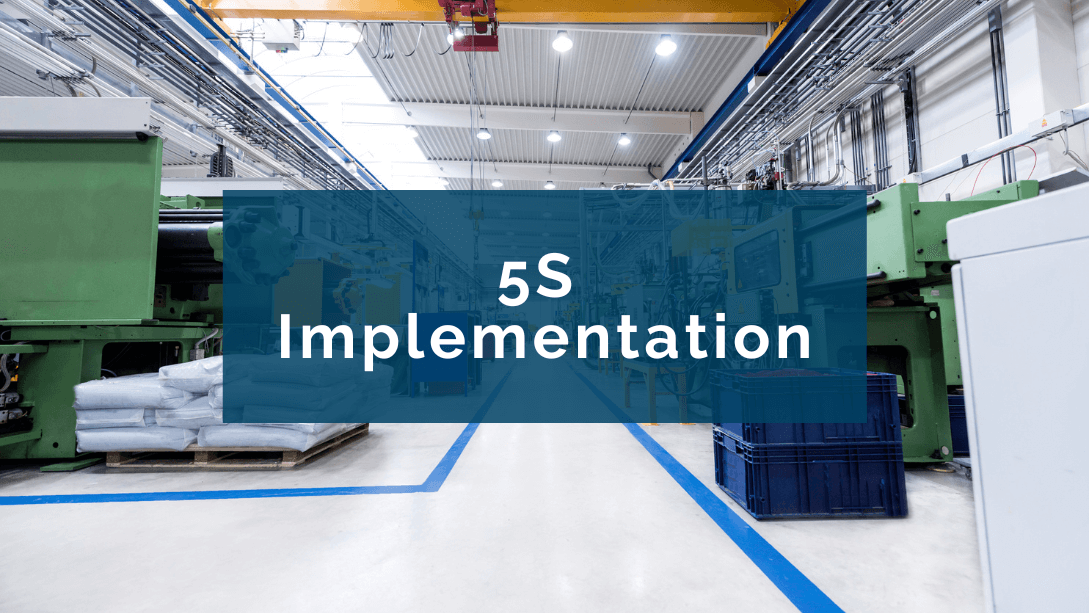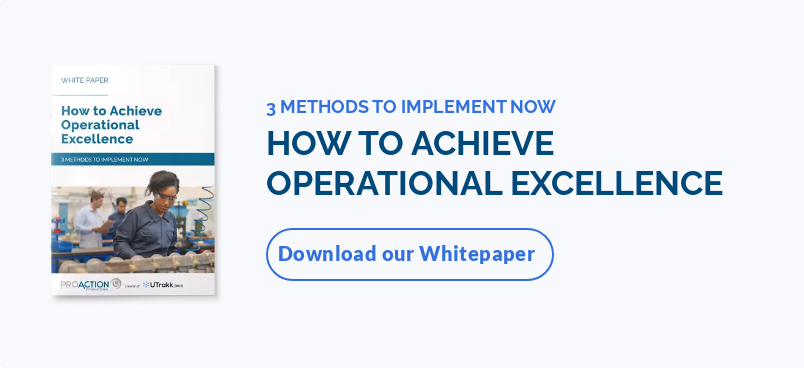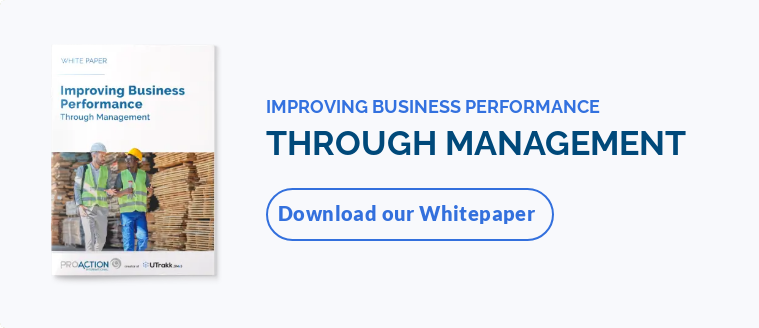What is the 5S methodology?
Rooted in the Toyota Production System (TPS) from Japan and now implemented in factories worldwide, the 5S method is a fundamental principle of Lean Manufacturing. Using visual management, this structured approach aims to:
- Organize and standardize the workspace to reduce waste.
- Improve overall workplace efficiency.
- Improve working conditions.
- Reduce workplace hazards.
“5S” refers to five Japanese words which translate as Sort (Seiri), Set in order (Seiton), Shine (Seiso), Standardize (Seiketsu), and Sustain (Shitsuke). Developed by Hiroyuki Hirano, each of these pillars is designed to bring structure, discipline, and visual order to the workspace.

Benefits of implementing a 5S methodology
Productivity gains
With clutter removed and essential tools easily accessible, employees spend less time searching and more time performing value-added tasks.
The 5S method also helps streamline processes by organizing tools in an intuitive way and standardizing procedures. This optimizes workflows and improves overall company efficiency and productivity.
Increased workplace safety
A clean and organized workspace is less prone to accidents. Careful storage of objects eliminates the risk of falling or having injuries, and fosters fast action in the event of an emergency.
Reduced waste and costs
Sorting out unnecessary items and putting everything away properly also has material benefits, such as less overstocking, less waste, and an optimized use of space, resulting in cost savings.
Improved quality
With standardized work procedures, regular cleaning, and a more efficient workplace, there is less variation in operations and space is controlled, resulting in higher quality production.
Improved employee engagement
Employees who work in an organized and safe environment feel productive and secure. This sense of well-being and accomplishment is more likely to increase employee engagement and retention.
Tools to support the 5S methodology
Several solutions can help you successfully implement the 5S method. Here are the top ones:
Red tags
During the sorting phase, red tags are used to mark items that are not needed in the workspace. This contributes to eliminating unnecessary items and properly storing or relocating useful tools.
Shadow boards
Shadow boards are visual controls that indicate the correct location for tools and equipment, so that they are always returned to the right place.
Visual controls and signage
The use of visual cues such as labels, floor marking tape, and color systems makes it easier for employees to understand storage instructions.
Kanban method
Kanban tools such as cards and boards help to visualize the status of different activities, identify bottlenecks, and ensure that each step of the 5S methodology is applied and sustained.
Checklists
Checklists are used to ensure that each step of the 5S methodology is properly followed. These checklists are especially useful for maintaining consistency and avoiding oversights during the various phases of the process.
UTrakk software
UTrakk is a Daily Management System (DMS) offering powerful features to support the 5S methodology. With to digitalized 5S audits and checklists, dedicated meetings or committees held on a regular basis, tools for tracking improvement projects, dashboards for real-time data analysis, and a repository for documenting standardized processes, the solution fosters consistent application of the 5S methodology, ensuring successful implementation and lasting results.
Steps for an effective 5S implementation
1. Create a 5S implementation team
Start by creating a dedicated team that includes employees from all affected departments, such as managers, supervisors, and frontline workers who understand the processes and how they work. Having a cross-functional team brings diverse perspectives, helps gain buy-in, and ensures everyone is on the same page.
2. Assess the workspace
Assess the current state of the workspace – tidiness, cleanliness, access to tools, furniture layout, etc. Performing Gemba Walks is one of the best ways to get a feel for the reality of the shop floor. In addition to interacting directly with frontline workers, you can take photos, monitor control points, and execute audits to understand which areas need improvement.
3. Train employees
It's critical that all team members understand the principles and long-term objectives of the 5S implementation. The methodology must make sense and bring benefits to those who apply it. Hold training sessions and/or offer development through coaching.
Pro tip: Providing training must be done on an ongoing basis, meaning even after the 5S methodology has been implemented in your organization.
4. Implement the 5S steps
- Sort (Seiri): Identify unnecessary items and use red tags to mark them. Decide whether they should be disposed of, stored elsewhere, or reused.
- Set in order (Seiton): Arrange necessary materials so that they are easily accessible. Use tools such as shadow boards, labels, and predefined areas for maximum workspace optimization.
- Shine (Seiso): Establish cleaning schedules and responsibilities. Cleaning should become a part of daily operations, and every employee should participate.
- Standardize (Seiketsu): Develop consistent procedures that describe how to maintain cleanliness and order in the work environment. Create checklists, instructions, and visual aids to support 5S principles.
- Sustain (Shitsuke): To ensure the 5S methodology is sustainable, everyone must adhere to it. Conduct regular audits and team meetings to discuss related activities and improvements.
5. Measure and improve
Regularly measure the effectiveness of the 5S methodology by gathering feedback, analyzing data, and identifying areas for improvement. Ongoing monitoring is crucial to ensure continuous improvement and lasting results.
Shitsuke: The challenge of sustaining 5S
Companies often seek consulting advice to implement a 5S methodology. The role of the consultant is to:
- Train teams.
- Hold workshops to optimize workstations based on the 5S principles.
- Help teams implement the changes on the floor through planned activities.
Here's the most common approach:
We begin by selecting a pilot department within the plant and developing a two-week action plan. During this time, our goal is to reorganize workstations and introduce new operational practices. This phase is typically very successful with our clients.
However, it's not uncommon for the same issues to resurface once the consultant’s mandate ends. I've witnessed this pattern repeatedly: organizations manage to implement 5S but struggle to sustain it in the long term. Over time, the new measures are less consistently applied. Yet, the fifth "S" of the 5S methodology (Shitsuke) is clear on this point: it means "sustain." This step requires ongoing rigor and commitment.
The critical role of the manager as a guide
The manager is responsible for monitoring, maintaining, and improving each step of the 5S methodology. In theory, they set an example and closely follow the rules to lead by example, and encourage their teams to do the same.
In practice however, frontline managers often underestimate this responsibility and neglect it. As a result, employees return to their previous habits, while the good practices of visual management are forgotten.
Many factors can explain this behavioral problem, but I've noticed some trends:
- Managers are often interrupted by emergencies (last-minute orders, machine breakdowns or replacements, etc.).
- Managers are overwhelmed with administrative tasks, which prevents them from supporting floor operations.
- Managers haven’t developed the best management skills yet. As a result, they struggle to anticipate problems and effectively drive operations.
- Leaders do not follow up with managers on 5S initiatives.
Employee discipline and the maintenance of best practices depend to a large extent on management on the factory floor. A project can only succeed if the manager's role is clearly understood, and if sustaining process improvement practices becomes the new norm.
Actions can be taken to reinforce this idea and ensure the success of the 5S methodology:
- Choose the right managers.
- Define clear roles and responsibilities.
- Involve senior management in supporting managers and promoting accountability.
Pro tip: Try an approach that focuses on management behaviors and you'll achieve outstanding results. After all, managers are the cornerstone of operational performance.
Tips to sustain 5S in your manufacturing organization
Involve management
Sustainable success starts at the top. When top management champions 5S initiatives, it demonstrates their importance to the entire workforce. Top management must actively participate, provide resources to stakeholders, and celebrate successes.
Build engagement to 5S programs
It's vital that every employee understands the importance of the 5S methodology and how they can contribute to its success. Organize awareness-raising sessions and involve workers in the decision-making process to reinforce their engagement.
Communicate the 5S action plan to all stakeholders
The 5S action plan must be clearly communicated to all levels of the organization. Inform employees of the objectives, expectations, and benefits of the initiative. Such transparency is an excellent way of encouraging buy-in.
Create a visual factory
Introduce visual management systems that reinforce the 5S approach on the floor, like indicators, markings and charts. A visual workplace naturally leads to compliance and increased efficiency.
Recognize and reward contributions
Recognition and positive reinforcement boost employee morale and motivation, encouraging workers to provide sustained effort in maintaining a well-organized workspace.
Integrate 5S into daily routines
Integrate 5S-related tasks into daily schedules. Cleaning, organizing, and standardizing should be a natural part of daily operations rather than a separate initiative.
From implementation to continuous improvement culture: Implementing 5S for sustainable operational success
The 5S method goes far beyond the simple reorganization of a workspace: it's a real cultural transformation that redefines the way factories work, collaborate, and manage continuous improvement. Initial implementation is crucial, as it lays a solid foundation for developing new practices that will become habits.
The challenge lies in sustaining these habits: 5S must be applied in a systematic approach. It must be a collective commitment that is anchored in the company's culture over the long term, guaranteeing lasting results and continuous improvement.
When integrated the right way, the 5S methodology not only promotes workplace efficiency and cleanliness, but also cultivates safety, quality, and operational excellence over the long term. Beyond these benefits, it has a remarkable impact on human dynamics within the organization. By giving each employee a sense of responsibility and the opportunity to actively contribute to process improvement, it becomes a driver for innovation and collective motivation.










